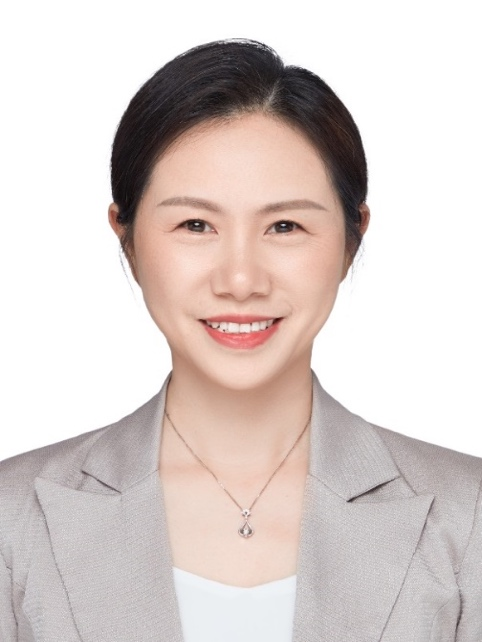Overview of Studies on Ye Tianshi’s Academic Thoughts in Differentiating and Treating Lung-System Diseases
Abstract
Ye Tianshi was a renowned expert in classical formulas during the Qing Dynasty. He created the Light Bitterness and Mild Pungency Method, which is formulated based on the compatibility of “Xing (bitter almond), Kou (Fructus amomi rotundus), Ju (tangerine peel), and Jie (platycodon root)”. This method regulates the dispersion and descent of lung Qi to dispel warm-heat pathogens and smooth the Qi movement of the triple energizer. In the treatment of lung system diseases, Ye classified them into two major categories based on etiology and pathogenesis: excess syndrome of nutrient-defense and deficiency syndrome of nutrient-defense. When discussing the treatment of cough caused by phlegm-fluid retention, he frequently referred to Synopsis of the Golden Chamber and attached great importance to summarizing and absorbing the academic thoughts of predecessors. As an accomplished expert in classical formulas, Ye Tianshi followed the academic essence of Xuanyuan and Qi Bo (founders of TCM theory) and respected the principles of Zhang Zhongjing’s classical formulas, integrating these theories in a coherent manner. With his masterful application of classical formulas to achieve remarkable curative effects, Ye’s academic viewpoints on treating lung system diseases still exert a profound influence on the modern clinical diagnosis and treatment of related diseases.
References
Ye G, 2020, Complete Medical Works of Ye Tianshi. Shanxi Science and Technology Press, 11: 33–34 + 110–115.
Fan Z, Zhou J, 2020, Exploration on the Origin of Ye Tianshi’s Medical Thought, thesis, Hebei University of Chinese Medicine.
Ma H, Dong Z, Zhou A, et al., 2022, Brief Analysis of Ye Tianshi’s Thought of “Clearing Heat and Nourishing Yin” and Medication Rules. Journal of Hebei Traditional Chinese Medicine and Pharmacology, 37(01): 8–9.
Zhu H, Tan T, Guo Q, et al., 2021, Discussion on the Yin-Nourishing Method in Synopsis of the Golden Chamber. Asia-Pacific Traditional Medicine, 17(05): 171–173.
Guo Y, Huang S, Zhang Z, et al., 2020, Exploration on Ye Tianshi’s Theory of “Sweet Medicines Should be Used when Vital Qi is Injured”. Jiangsu Journal of Traditional Chinese Medicine, 52(07): 4–7.
Dai Q, Wu X, Liu H, et al., 2021, Analysis on the Application Characteristics of Ophiopogon Japonicus in Linzheng Zhinan Yian (Guide to Clinical Practice with Medical Records). Journal of Chengdu University of Traditional Chinese Medicine, 44(03): 86–87.
Wu F, Dong C, Wang X, et al., 2021, Exploration on Ye Tianshi’s Therapeutic Characteristics for Pulmonary Diseases Based on Linzheng Zhinan Yian. China Journal of Traditional Chinese Medicine and Pharmacy, 36(03): 1328–1330.
Wang C, Li B, Gong L, et al., 2020, Exploration on Ye Tianshi’s Ideas and Methods for Treating Asthma in Linzheng Zhinan Yian. Journal of Zhejiang Chinese Medical University, 44(12): 1246–1250.
Zhao P, Pu M, 2021, Analysis on Ye Tianshi’s Experience in Treating Lung Obstruction (Feibi). Clinical Journal of Chinese Medicine, 13(13): 45–47.
Li N, Wu X, Shi L, et al., 2020, Analysis on Ye Tianshi’s Treatment of Cough in Linzheng Zhinan Yian. Yunnan University of Traditional Chinese Medicine, 27(04): 63–66.
Wei D, 2020, Analysis on the Characteristics of Ye Tianshi’s Treatment of Phlegm-Retention Diseases (TanYin). Jiangxi University of Traditional Chinese Medicine, 32(06): 11–13.
Lü M, Cui H, Ren P, et al., 2021, Origin of the Theory of “Cold Enveloping Fire” and Its Application in Pulmonary Diseases. China Journal of Chinese Materia Medica, 36(09): 1863–1867.
Wei J, Ai J, 2021, Study on the Application of Ye Tianshi’s Academic Thought of Warm Diseases in Pediatric Warm Diseases, thesis, Guangxi University of Traditional Chinese Medicine.
An S, Ma M, Dong Y, et al., 2022, Analysis on the Warming Method in Linzheng Zhinan Yian. Zhejiang Journal of Traditional Chinese Medicine, 57(01): 8–9.
Wang J, Cui H, Gong X, et al., 2021, Discussion on Ye Tianshi’s Thought of Treating Pulmonary Diseases from the Perspective of Nutrient-Qi and Defensive-Qi (Yingwei). Journal of Zhejiang Chinese Medical University, 45(12): 1311–1312.


